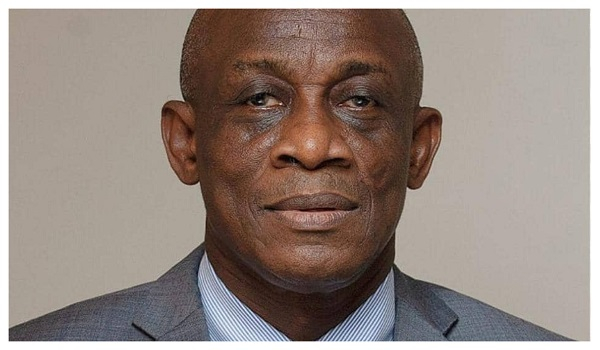Medical Rehabilitation Robotics Market Grows from USD 570.2M in 2025 to USD 2.36m by 2035 at 15.3% CAGR
The medical rehabilitation robotics market is steadily transforming the landscape of post-acute care and physical therapy. With a focus on assisting patients with mobility impairments, these robotic solutions are enabling faster, safer, and more efficient rehabilitation processes. The integration of robotics into medical rehabilitation not only enhances patient outcomes but also aids healthcare professionals in delivering consistent and repetitive therapies that are often difficult to achieve manually. These systems are increasingly being adopted in hospitals, outpatient centers, and home care settings, contributing to the ongoing modernization of healthcare services.
The market is expected to reach USD 570.2 million in 2025 and is projected to grow to USD 2,367.6 million by 2035, registering a compound annual growth rate (CAGR) of 15.3% over the forecast period. One of the major drivers of this market is the increasing adoption of robotic rehabilitation solutions in post-stroke and spinal cord injury treatments.
As global healthcare systems continue to emphasize patient-centric solutions, the demand for advanced technologies in rehabilitation is surging. Medical rehabilitation robotics offer a perfect amalgamation of mechanical precision and personalized therapy. Their ability to collect real-time data and monitor patient progress ensures that rehabilitation plans are adaptable and tailored, improving recovery timelines. This technological evolution is crucial for treating patients with neurological disorders, spinal cord injuries, strokes, and musculoskeletal issues.
The medical rehabilitation robotics market has witnessed substantial growth in recent years due to increasing awareness and the growing prevalence of chronic conditions. The expanding geriatric population, which is more susceptible to physical disabilities, further fuels the need for robotic-assisted therapy. Technological innovations such as AI-powered exoskeletons, sensor-integrated systems, and remote monitoring capabilities are shaping current market trends.
The adoption of rehabilitation robots is not limited to developed countries. Emerging economies are gradually investing in healthcare infrastructure that includes robotic technologies. Moreover, there is a notable trend toward the development of compact and affordable robotic rehabilitation devices tailored for home use. This shift allows patients to continue therapy beyond clinical settings, ultimately contributing to sustained market expansion.
One of the key highlights of the medical rehabilitation robotics market is the integration of artificial intelligence and machine learning. These technologies empower robotic systems to adapt to individual patient needs, making therapy sessions more effective. Another significant advancement is the incorporation of virtual and augmented reality, enhancing user engagement and motivation during therapy exercises.
Collaborations between technology companies and healthcare providers are becoming more common, leading to innovative product development and improved therapeutic protocols. Additionally, insurance providers in some regions are beginning to cover robotic-assisted rehabilitation, which enhances market accessibility. These milestones indicate strong momentum and confidence in the growth and utility of robotic rehabilitation.
Despite its promising growth, the medical rehabilitation robotics market faces several challenges. High initial costs of robotic systems often deter small and medium healthcare providers from adopting them. Moreover, a lack of skilled professionals who can operate and maintain these advanced machines limits their usage. Some regions still face regulatory hurdles that delay product approvals and implementation.
However, these challenges are counterbalanced by several opportunities. The growing focus on personalized medicine and precision healthcare creates room for innovation in robotic design and functionality. Educational programs and certifications for healthcare workers in robotic operations are also gaining traction, which will support future market adoption. Furthermore, increasing investments in research and development are likely to yield cost-effective and versatile solutions, broadening the potential user base.
For stakeholders across the healthcare ecosystem, the medical rehabilitation robotics market offers a range of advantages. Healthcare providers benefit from reduced physical strain, enhanced therapy efficiency, and improved patient outcomes. For patients, robotic systems offer consistent and measurable rehabilitation experiences, which are especially beneficial for those requiring long-term care or dealing with chronic conditions.
Manufacturers and technology developers gain access to a growing market with numerous possibilities for innovation. Government agencies and insurers are also realizing the long-term cost-saving potential of robotic-assisted therapy, especially as it reduces hospital readmissions and promotes quicker recovery. Collectively, these benefits contribute to the rising integration of robotics into mainstream rehabilitation protocols.
Geographically, the medical rehabilitation robotics market shows strong penetration in North America and Europe, attributed to well-established healthcare systems and early adoption of advanced medical technologies. These regions also benefit from government support and significant investments in healthcare R&D. The presence of key market players further strengthens their dominance.
Asia-Pacific is emerging as a significant growth area due to its rapidly aging population, rising healthcare expenditure, and increasing adoption of automation in the medical field. Countries like China, Japan, and South Korea are leading the region in terms of technological innovation and implementation. In contrast, Latin America and the Middle East & Africa show moderate growth, mainly driven by improvements in healthcare infrastructure and increasing awareness of robotic rehabilitation.
The medical rehabilitation robotics market is characterized by intense competition and rapid technological advancements. Established players are continuously investing in research and partnerships to maintain their market position and deliver innovative solutions. New entrants are also making strides by offering niche and cost-effective products tailored to specific rehabilitation needs.
Innovation is a key differentiator in this competitive landscape. Companies are focusing on making their devices more user-friendly, portable, and connected, aligning with the increasing trend toward remote healthcare. Mergers, acquisitions, and strategic collaborations are common as businesses aim to expand their geographical reach and product portfolios. Regulatory compliance, product efficacy, and pricing strategies play crucial roles in shaping competitive dynamics.
Several leading companies are spearheading the development and commercialization of rehabilitation robotics. These include both long-standing medical device manufacturers and specialized robotic firms. Their commitment to improving healthcare through automation and innovation has led to a wide range of products catering to different patient demographics and rehabilitation requirements.
These top players often leverage advanced technologies such as AI, cloud computing, and sensor fusion to enhance the performance and accuracy of their systems. Their strong distribution networks, combined with comprehensive customer support, enable them to maintain a robust presence in both developed and developing markets. Ongoing product launches and patent filings reflect their continuous drive for advancement in this dynamic market.
The medical rehabilitation robotics market can be segmented based on product type, application, end-user, and geography. Product types generally include exoskeletons, therapeutic robots, and assistive robots. Each category serves unique purposes—from restoring motor function to supporting daily activities for physically challenged individuals.
In terms of application, these robotics are widely used for neurological rehabilitation, orthopedic rehabilitation, and cardiovascular therapy. Neurological applications, particularly for stroke and spinal cord injury patients, dominate the market due to the high prevalence and long recovery periods associated with such conditions. End-users primarily include hospitals, rehabilitation centers, and homecare settings, with home-based robotics showing rising adoption due to convenience and cost-efficiency.
Geographical segmentation reveals a varied adoption pattern, largely influenced by healthcare infrastructure, economic conditions, and technological readiness. Tailoring solutions to regional needs and ensuring compliance with local regulatory standards are critical for companies looking to capitalize on diverse markets.
Future Market Insights, Inc. (ESOMAR certified, recipient of the Stevie Award, and a member of the Greater New York Chamber of Commerce) offers profound insights into the driving factors that are boosting demand in the market. FMI stands as the leading global provider of market intelligence, advisory services, consulting, and events for the Packaging, Food and Beverage, Consumer Technology, Healthcare, Industrial, and Chemicals markets. With a vast team of over 400 analystsworldwide, FMI provides global, regional, and local expertise on diverse domains and industry trends across more than 110 countries.
Future Market Insights Inc.
Christiana Corporate, 200 Continental Drive,
Suite 401, Newark, Delaware – 19713, USA
T: +1-347-918-3531
[email protected]
Website: https://www.futuremarketinsights.com
LinkedIn| Twitter| Blogs | YouTube









